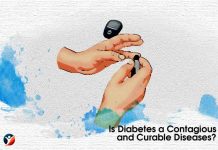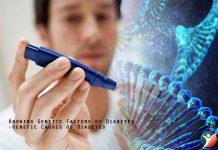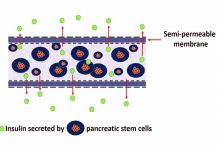
Diabetes can affect anyone. Diabetes is increasingly becoming a global epidemic with around 422 million people suffering from the disease. It is projected to emerge as one of the leading causes of death by the year 2030.
Diabetes is the prime cause of blindness, amputations, kidney failure and stroke. Living with this condition can be difficult. But first we must know what is diabetes? To be able to accurately understand diabetes, it is important to know what role insulin plays in the body. When we eat, body breaks foods into sugar or basically glucose. This is the time when pancreas releases insulin. Insulin plays an important role in maintaining blood glucose levels. The body cells use blood glucose to release energy. Diabetes is a chronic condition in which the body either does not produce insulin or is unable to use the insulin produced. Insulin controls the amount of sugar in blood. Diabetes leads to increased levels of blood sugar. This can damage organs, nerves and blood vessels. In healthy body, when the levels of blood sugar become very high, beta cells in pancreas get activated to release insulin. Insulin makes the body cells absorb sugar.
Conventional Classification of Diabetes
The most common types of diabetes are type 1 and type 2 diabetes. There are also other kinds like gestational diabetes which occur during pregnancy. Type 1 diabetes is caused when the immune system attacks and kills beta cells in pancreas. In this case, very little to no insulin is released in the body. This leads to rise in blood sugar level. The rate of incidence of type 1 diabetes is 5-10% of people having diabetes[1]. It is also called as juvenile diabetes as it develops in childhood but can also develop in adulthood. Type 1 diabetes can be treated with insulin. Proper diet can also help maintain blood sugar at normal levels.
In type 2 diabetes, the body is either unable to use insulin that is released or does not produce sufficient insulin. The first case is known as insulin insensitivity. Sugar level increases in the blood instead of getting converted into energy. Around 90% of people having diabetes have type 2 diabetes. It generally affects adults but can affect children as well. It can be controlled with exercise and proper diet. Depending on the severity of the condition, medicines or insulin may be needed to control blood sugar.
There is another type of diabetes known as gestational diabetes. It temporarily occurs during pregnancy. The rate of incidence is not very high. It affects around 2 to 4% of pregnant ladies.
There are many complications associated with diabetes like kidney stone, amputation of limb, heart disease, anxiety, erectile dysfunction. Complications related to diabetes can be life-threatening. Proper management of blood sugar level can reduce the chances of developing the complications.
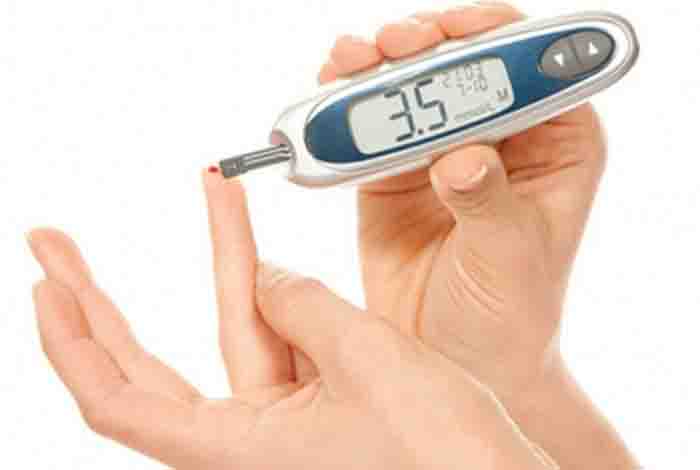
Findings of a Latest Research
Now let us discuss about some new findings in the diagnosis and treatment of diabetes. It has been reported by BBC News that diabetes is not one but combination of five diseases. The study examined people in Finland and Sweden. The researchers studied body weight, antibodies present and blood sugar control for understanding the chances of complications and requirements for insulin. When the researchers interpreted the results, they classified diabetes into 5 subtypes or clusters. Cluster 1 is similar to type 1 diabetes whereas cluster 4 and 5 is related with type 2 diabetes. Cluster 2 and 3 lie between the two. This study is a great tool in enriching our knowledge of diabetes. In this study it was found that individuals with cluster 2 or 3 diabetes had greater chances of developing kidney disease or problems related to eyes than people belonging to other clusters. Research is required to see how this holds true for different ethnicities.

What did the research entail?
Researchers at Lund University, University of Gothenburg and Uppsala University carried out the study. Conventionally, diabetes is known to manifest in two forms- type 1 and type 2 which have already been discussed in the preceding paragraphs. A need for refined classification was felt by the researchers as it could help in giving personalized solutions to people having diabetes. It will also help in identifying who have higher chances of developing complications.
Data from five cohort studies was examined. In the first study conducted by All New Diabetics in Scania, around 15,000 people were recruited who were suspected to have diabetes from the year 2008 to 2016. Follow up was done after 4 years on an average. Scania Diabetes registry examined 8,000 people having diabetes in Scania from the year 1996 to 2009. The follow up was done on an average after 12 years. Another project known as All New Diabetics in Uppsala was conducted in Sweden
In all these studies, blood sample was obtained from participants and the researchers analyzed the DNA and blood sample. This prompted them to study characteristic of patients, rate of complication like kidney problems or vision problems and their use of medicines. People were grouped according to the following characteristics:
- Age at which the diagnosis was made
- BMI (body mass index)
- Presence of glutamate decarboxylase antibodies
- Measurement of cells’ response to insulin
- Glycated hemoglobin—indicator of blood sugar control
Glutamate decarboxylase antibodies (GADA) are associated with late onset auto immune diabetes. This could be mistaken as type 2 diabetes as symptoms are similar. All cohorts were studies in a similar fashion.
The study was published in the journal ‘The Lancet.’[2]
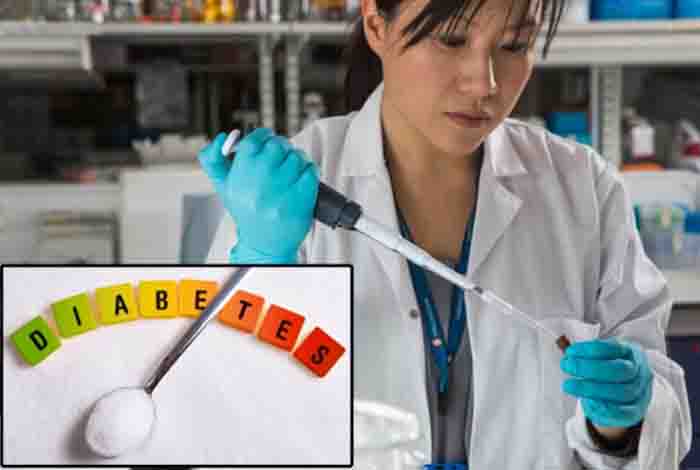
Results of the Study:
Five main disease cluster were identified:
- Severe autoimmune diabetes (SAID): This affects younger population. It occurs in people with low BMI, poor blood sugar control, deficiency of insulin and GADA.
- Severe insulin Deficient Diabetes: Symptoms are similar to SAID. Just that it is GADA negative.
- Mild obesity related diabetes (MOD): Marked by obesity but not resistant to insulin.
- Severe insulin resistance diabetes(SIRD): High BMI and marked by insulin resistance.
- Mild age-related diabetes (MARD): Individuals in this group were older than in other clusters and had mild issues with glucose control.
Researchers found that people in cluster 3 had more risk of kidney disease, whereas cluster 2 had high risk of diabetic eye disease as compared to other clusters.
This is a valuable research which suggests the diagnosis of diabetes might not be as simple as types 1 and 2. It has been already seen that some people who develop diabetes in later stages of life and are often presumed to suffer from 2 diabetes, may actually have LADA. Better understanding about the types and causes of diabetes may help in the treatment. However, this research alone may not help to make changes in diabetes treatment guidelines. The clusters and related complications will need to be analyzed in other populations too.



